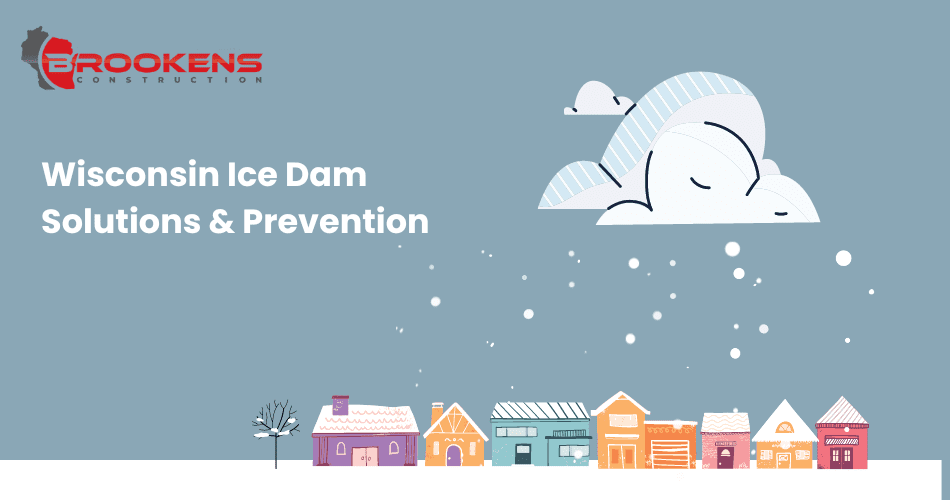Living in Wisconsin comes with a unique set of challenges, especially when it comes to maintaining the integrity of your home during the harsh winter months. Among these challenges, ice damming stands out as a significant concern for homeowners, particularly for those with pitched roofs. Let’s explore why ice damming is a problem in Wisconsin and what steps homeowners can take to mitigate its effects.
Wisconsin Climate: Why Ice Dams form on roofs
Wisconsin’s climate is characterized by cold winters with heavy snowfall followed by periods of thawing and refreezing. This fluctuation in temperature creates the ideal conditions for the formation of ice dams on roofs. Here’s how it happens:
- Heavy Snowfall: Wisconsin winters often bring lots of snow, which accumulate on roofs over time.
- Temperature Fluctuations: During the day, sunlight and rising temperatures cause the snow on the roof to melt. As the water runs down the roof, it reaches the colder eaves where it refreezes, forming a barrier of ice.
- Blocked Drainage: As more snow melts and refreezes, the ice barrier grows, trapping water behind it. This trapped water can seep under the shingles, causing damage to the roof structure, insulation, and interior of the home.
Ice Dams in Wisconsin: Risks to Roof Integrity
Ice dams pose a range of threats to the structural integrity of your roof and home. Some of the potential risks associated with ice damming include:
- Water Damage: The water trapped behind the ice dam can find its way under the shingles, leading to leaks and water damage inside your home. Over time, this moisture intrusion can compromise the integrity of the roof decking and insulation.
- Gutter Damage: The weight of the ice dams can put strain on your gutters and downspouts, causing them to sag or detach from the roofline. Additionally, as the ice melts, it can create icicles that pose a safety hazard to people and pets below.
- Mold and Mildew: Moisture trapped in the attic or walls as a result of ice damming can create conditions for mold and mildew growth. Not only can mold compromise indoor air quality, but it can also lead to respiratory issues and flare up allergies and asthma symptoms.
Wisconsin Ice Dam Solutions & Prevention for your Roof
While ice damming is a common problem in Wisconsin, there are steps homeowners can take to reduce its impact and safeguard their roofs. Here are some prevention and mitigation solutions to consider:
- Insulation and Ventilation: Proper insulation and ventilation in the attic can help maintain a consistent temperature on the roof, preventing snow from melting and refreezing at the eaves. Adequate insulation also helps prevent heat loss from the interior of the home, reducing the risk of ice dam formation.
- Roof Raking: Using a roof rake to remove excess snow from the roof can help prevent the buildup of ice dams. It’s important to exercise caution when raking to avoid damaging the shingles or injuring yourself.
- Heat Cables: Installing heat cables along the eaves and gutters can help melt snow and ice, creating channels for water to drain safely away from the roof. However, it’s essential to follow manufacturer guidelines and ensure proper installation to avoid fire hazards!
Ice dams pose a significant threat to the structural integrity and safety of homes in Wisconsin, especially during the winter months. By understanding the factors that contribute to ice dam formation and implementing proactive measures to prevent and mitigate its effects, homeowners can protect their roofs and preserve the comfort and safety of their living spaces. Remember, when it comes to ice damming, prevention is key.

